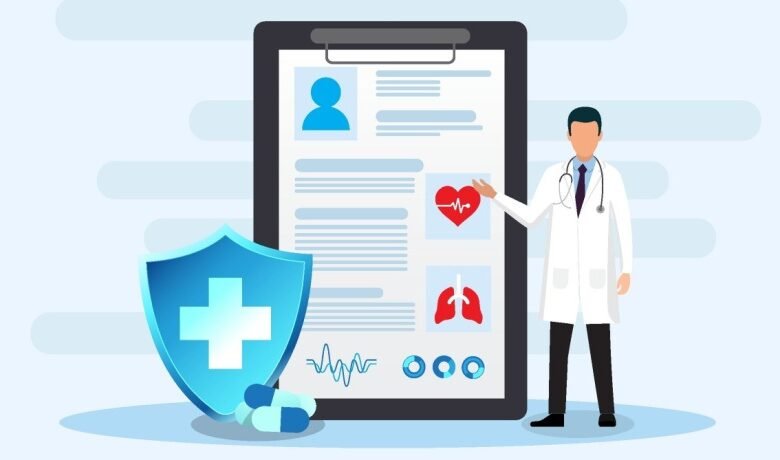

Discover The Importance Of Personalized Learning
In today’s rapidly evolving healthcare landscape, the integration of technology is more crucial than ever. Healthcare technology has not only improved patient care but has also transformed the way healthcare professionals operate. To ensure that staff can leverage these advancements effectively, comprehensive training is imperative. Custom eLearning solutions emerge as a game changer, offering a tailored approach to equip healthcare professionals with the skills needed to navigate the digital age. In this article, we’ll explore the significance of healthcare technology training, the challenges faced, and how custom eLearning solutions can address these challenges to enhance staff competence.
The Importance Of Healthcare Technology Training
Adapting To Technological Advancements
Healthcare is witnessing a surge in innovative technologies, from electronic health records (EHR) to telemedicine. Training staff to adapt to these advancements ensures they can harness the full potential of technology, leading to improved patient outcomes and operational efficiency.
Enhancing Patient Care
Efficient use of healthcare technology translates into better patient care. When staff are well-versed in using technology, they can provide more accurate diagnoses, streamline treatment plans, and ensure a seamless patient experience.
Increasing Operational Efficiency
Technology streamlines administrative processes, reducing paperwork and minimizing errors. Through effective training, healthcare staff can optimize the use of digital tools, leading to enhanced operational efficiency and cost savings.
Challenges In Healthcare Technology Training
Diverse Skill Levels
Healthcare staff often have varying levels of technological proficiency. Designing a one-size-fits-all training program may leave some staff members struggling to keep up, while others find it too basic. Customization is key to addressing this challenge.
Time Constraints
Healthcare professionals have demanding schedules, leaving little time for extensive training programs. Finding a balance between comprehensive training and minimal disruption to daily operations is crucial.
Security Concerns
With the increasing digitization of healthcare data, cybersecurity becomes a major concern. Training programs should include modules on cybersecurity best practices to ensure the safety and integrity of patient information.
Custom eLearning Solutions For Healthcare Technology Training: A Tailored Approach
Personalized Learning Paths
Custom eLearning solutions enable the creation of personalized learning paths based on the individual needs and skill levels of healthcare staff. This ensures that each staff member receives the right level of training without overwhelming or underwhelming them.
Interactive Modules
Traditional training methods can be mundane and less engaging. Custom eLearning solutions incorporate interactive modules, such as simulations and scenarios, making the learning experience more enjoyable and effective.
Flexibility In Training Schedules
Custom eLearning solutions provide flexibility, allowing healthcare professionals to access training materials at their convenience. This addresses the time constraints faced by staff, ensuring that the training can be seamlessly integrated into their busy schedules.
Real-Time Assessments
Regular assessments help gauge the effectiveness of the training program. Custom eLearning solutions can incorporate real-time assessments, allowing staff to receive immediate feedback on their progress and areas that may need further attention.
Scalability
As healthcare technology continues to evolve, so do the training needs. Custom eLearning solutions are scalable, making it easy to update and expand training programs to keep pace with technological advancements.
Designing An Effective Custom eLearning Program
Needs Assessment
Conduct a thorough needs assessment to identify the specific skills and knowledge gaps within the healthcare staff. This forms the foundation for designing a targeted and effective eLearning program.
Collaboration With Subject Matter Experts
Engage with healthcare professionals and IT experts to ensure that the eLearning content is accurate, relevant, and aligns with the practical needs of the staff.
User-Friendly Interface
A user-friendly interface is crucial for the success of any eLearning program. Design the platform with intuitive navigation, clear instructions, and visually appealing elements to enhance the overall learning experience.
Multimedia Integration
Utilize multimedia elements such as videos, infographics, and animations to make the learning experience more dynamic and engaging. Visual aids can enhance the comprehension and retention of complex healthcare technology concepts.
Feedback Mechanism
Incorporate a feedback mechanism where staff can provide insights on the effectiveness of the training program. This continuous feedback loop allows for ongoing improvements and adjustments.
Overcoming Resistance To Change
Communication And Transparency
Communicate the benefits of healthcare technology training to staff. Address concerns and provide transparency about how the training program aligns with organizational goals and the overall improvement of patient care.
Incentives
Introduce incentives to motivate staff to actively participate in the training program. This could include recognition, professional development opportunities, or even tangible rewards.
Continuous Support
Offer ongoing support to staff as they implement newly acquired skills. This can include access to help desks, additional training resources, and mentorship programs to ensure a smooth transition.
Conclusion
Healthcare technology training is a cornerstone of ensuring that healthcare professionals are well-equipped to navigate the ever-changing landscape of digital healthcare. Custom eLearning solutions emerge as a powerful tool, offering a tailored approach that addresses the unique challenges faced by healthcare staff. By prioritizing personalized learning paths, interactive modules, flexibility, real-time assessments, and scalability, organizations can revolutionize their training programs, ultimately leading to improved patient care and operational excellence in the digital era.
Source link




